Why Cloud Native and Analysis-Ready-Cloud-Optimized (ARCO) Data for Scalable Cloud Computing and Data Analytics to Support Open Science
NOAA Enterprise Data Management Workshop May 2024
Volume of data
Users can no longer manage analysis on a single machine.
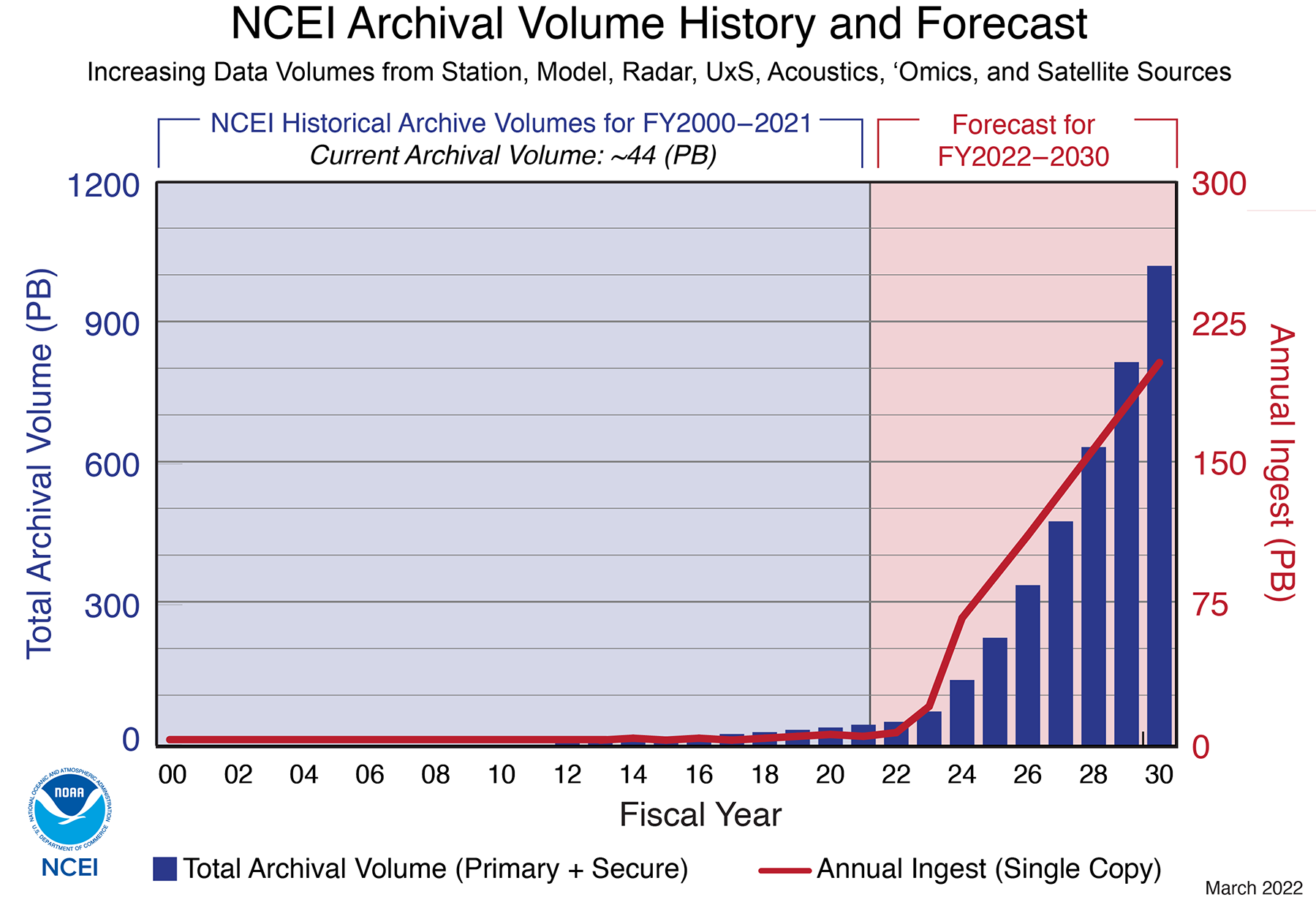
image source: https://www.ncei.noaa.gov/news/ncei-archive-growth-and-change
Cloud-native workflows enable reproducible, scalable analysis.
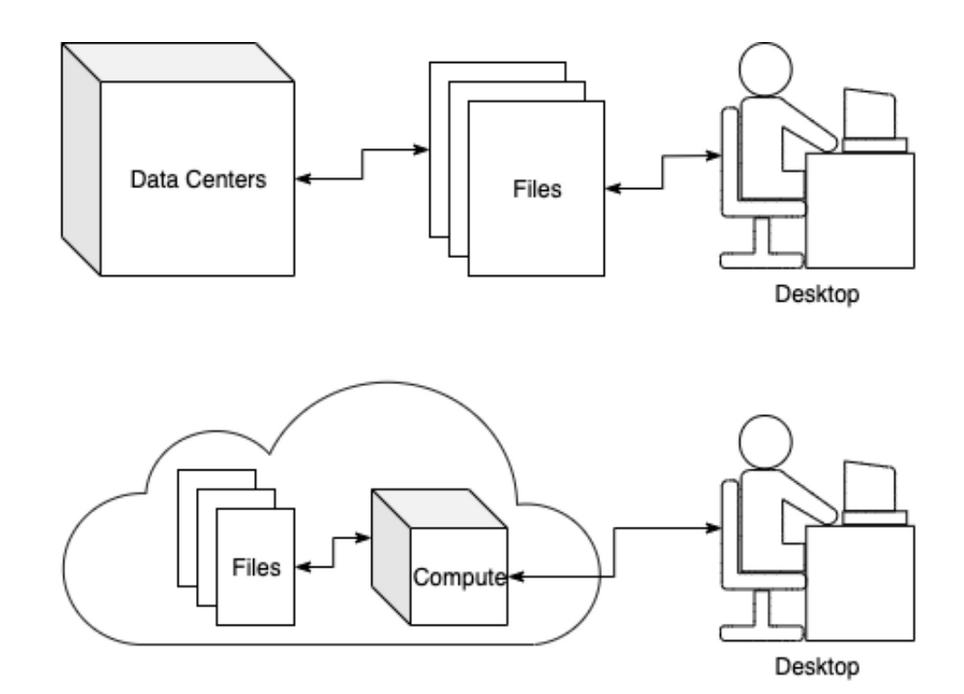
- End-to-end science workflows can be performed in the cloud: from data discovery, to processing, to analytics and visualization.
- This is possible via direct data access to cloud-optimized data by users or services.
- Cloud-native workflows promote:
- scalability,
- reproducibility, and
- and online publishing (executable papers).
What Makes Cloud-Optimized Challenging?
- Just putting files in the cloud is not enough.
- There is no one size fits all approach.
- Based on data type – raster, vector or point cloud – Earth observation data may be processed into different formats and stored in a variety of data structures.
- Optimization also depends on the user: users have to learn new tools and access needs differ.
- BUT, there are concepts that all cloud-optimized access has in common.
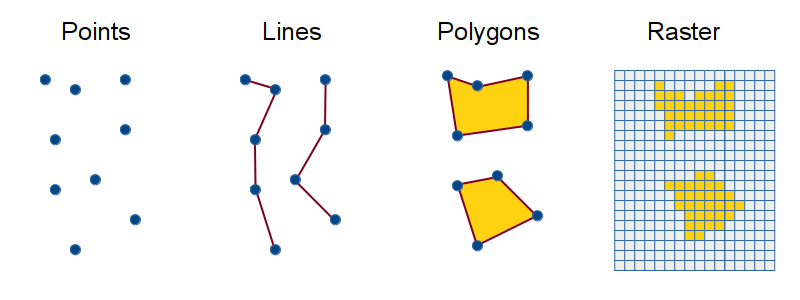
image source: ui.josiahparry.com/spatial-analysis.html
What Does Cloud-Optimized Mean?
- Make as few requests as possible.
- Make even less for metadata (preferably only 1)
Why minimize the number of requests?
- Because, when accessing data over the internet, such as when data is in cloud storage, latency is high when compared with local storage so it is preferable to fetch lots of data in fewer reads.
- If you can load all metadata in a few reads, those can be used to make requests for a cloud-native dataset.
- A cloud-native dataset is one with small addressable chunks via files, internal tiles, or both.
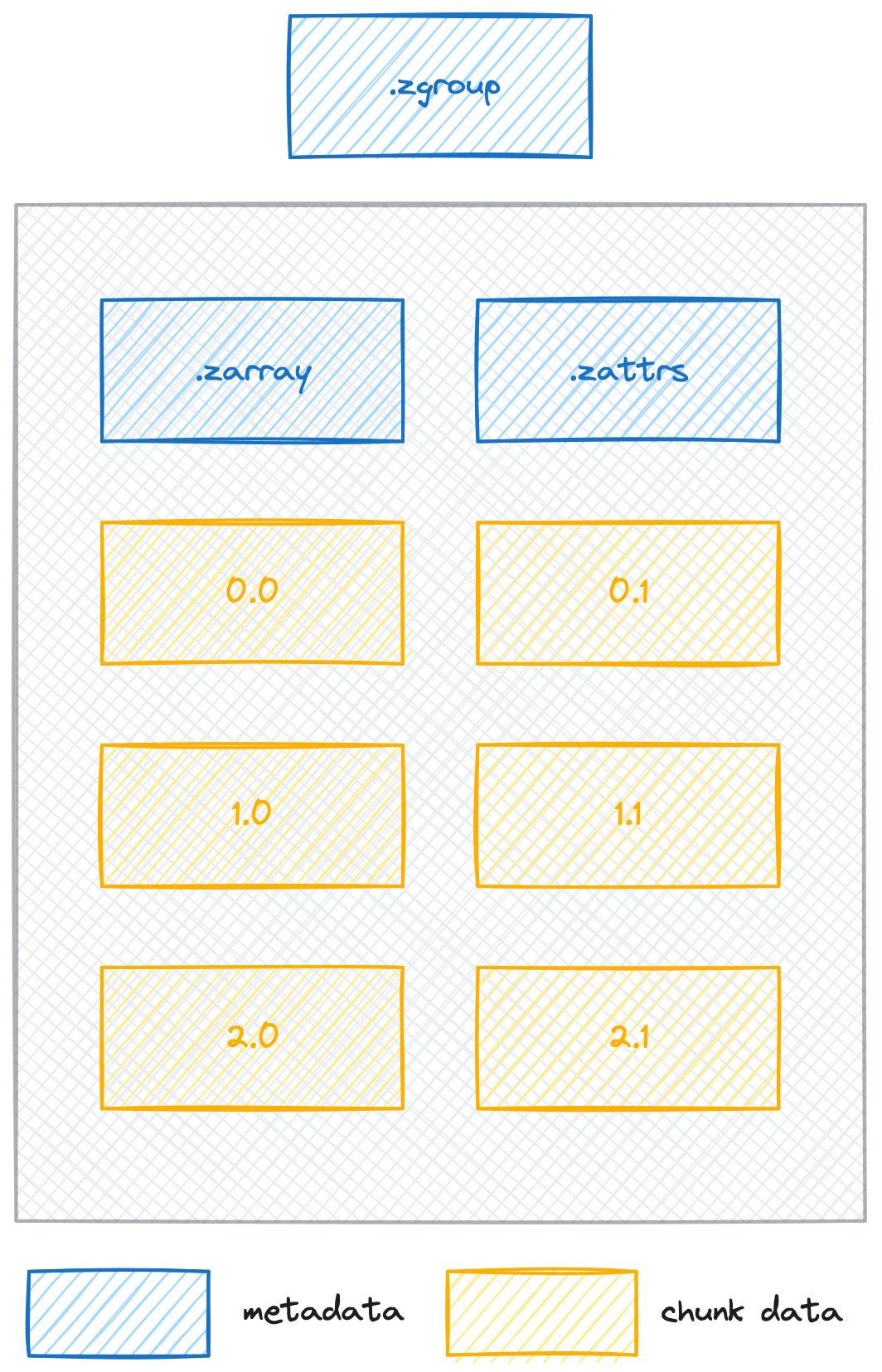
image credit: https://wiki.earthdata.nasa.gov/display/ESO/Zarr+Format
How does it work?
- Data in cloud storage must be accessible over HTTP using range requests. Object storage supports this.
- HTTP range requests support lazy access and intelligent subsetting.
- Integrates with high-level analysis libraries and distributed frameworks.

Formats by Data Type
| Format | Data Type | Standard Status |
|---|---|---|
| Cloud-Optimized GeoTIFF (COG) | Raster | OGC standard for comment |
| Zarr, Kerchunk | Multi-dimensional raster | ESDIS and OGC standards in development |
| Cloud-Optimized Point Cloud (COPC), Entwine Point Tiles (EPT) | Point Clouds* | no known ESDIS or OGC standard |
| FlatGeobuf, GeoParquet, | Vector | no known ESDIS, draft OGC standard |
Formats by Data Type
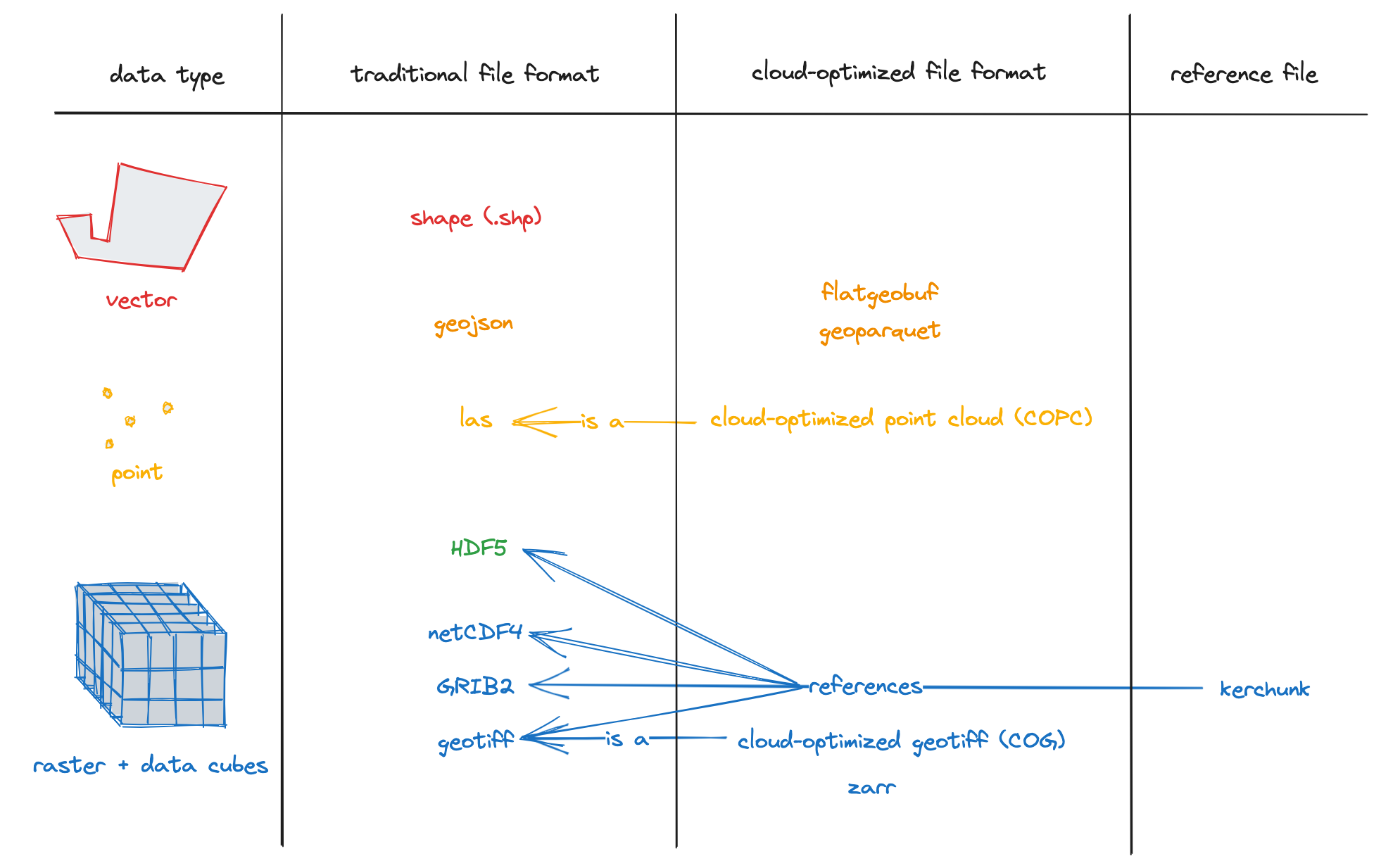
Formats by Adoption
| Format | Adoption | Standard Status |
|---|---|---|
| Cloud-Optimized GeoTIFF (COG) | Widely adopted | OGC standard for comment |
| Zarr, Kerchunk | (Less) widely adopted, especially in specific communities | ESDIS and OGC standards in development |
| Entwine Point Tiles (EPT), Cloud-Optimized Point Cloud (COPC) | Less common (PDAL Supported) | no known ESDIS or OGC standard |
| GeoParquet, FlatGeobuf | Less common (OGR Supported) | no known ESDIS, draft OGC standard |
What are COGs?
- COGs are raster data representing a snapshot in time of gridded data, for example digital elevation models (DEMs).
- COGs are a de facto standard, with an Open Geospatial Consortium (OGC) standard under review.
- The standard specifies conformance to how the GeoTIFF is formatted, with additional requirements of tiling and overviews.
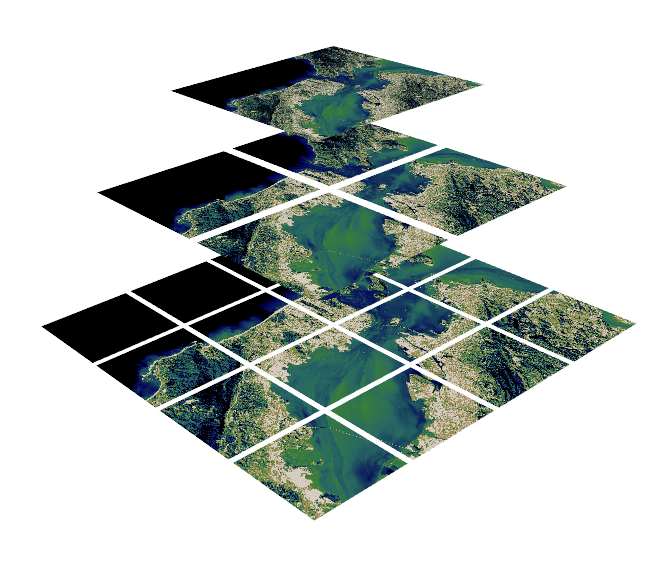
image source: https://www.kitware.com/deciphering-cloud-optimized-geotiffs/
What are COGs?
- COGs have internal file directories (IFDs) which are used to tell clients where to find different overview levels and data within the file.
- Clients can use this metadata to read only the data they need to visualize or calculate.
- This internal organization is friendly for consumption by clients issuing HTTP GET range request (“bytes: start_offset-end_offset” HTTP header)

image source: https://medium.com/devseed/cog-talk-part-1-whats-new-941facbcd3d1
What is Zarr?
- Zarr is used to represent multidimensional raster data or “data cubes”. For example, weather data and climate models.
- Chunked, compressed, N-dimensional arrays.
- The metadata is stored external to the data files themselves.
- Zarr data is often reorganized and compressed from it’s original format into many files which can be accessed according to which chunks the user is interested in.

image source: https://xarray.dev/
What is Kerchunk?
- Kerchunk is a way to create Zarr metadata for archival formats, so that you can leverage the benefits of partial and parallel reads for archives in NetCDF4, HDF5, GRIB2, TIFF and FITS.

image source: https://fsspec.github.io/kerchunk/detail.html
COPC (Cloud-Optimized Point Clouds)

image source: https://copc.io/
- Point clouds are a set of data points in space, such as gathered from LiDAR measurements.
- COPC is a valid LAZ file.
- Similar to COGs but for point clouds: COPC is just one file, but data is reorganized into a clustered octree instead of regularly gridded overviews.
FlatGeoBuf
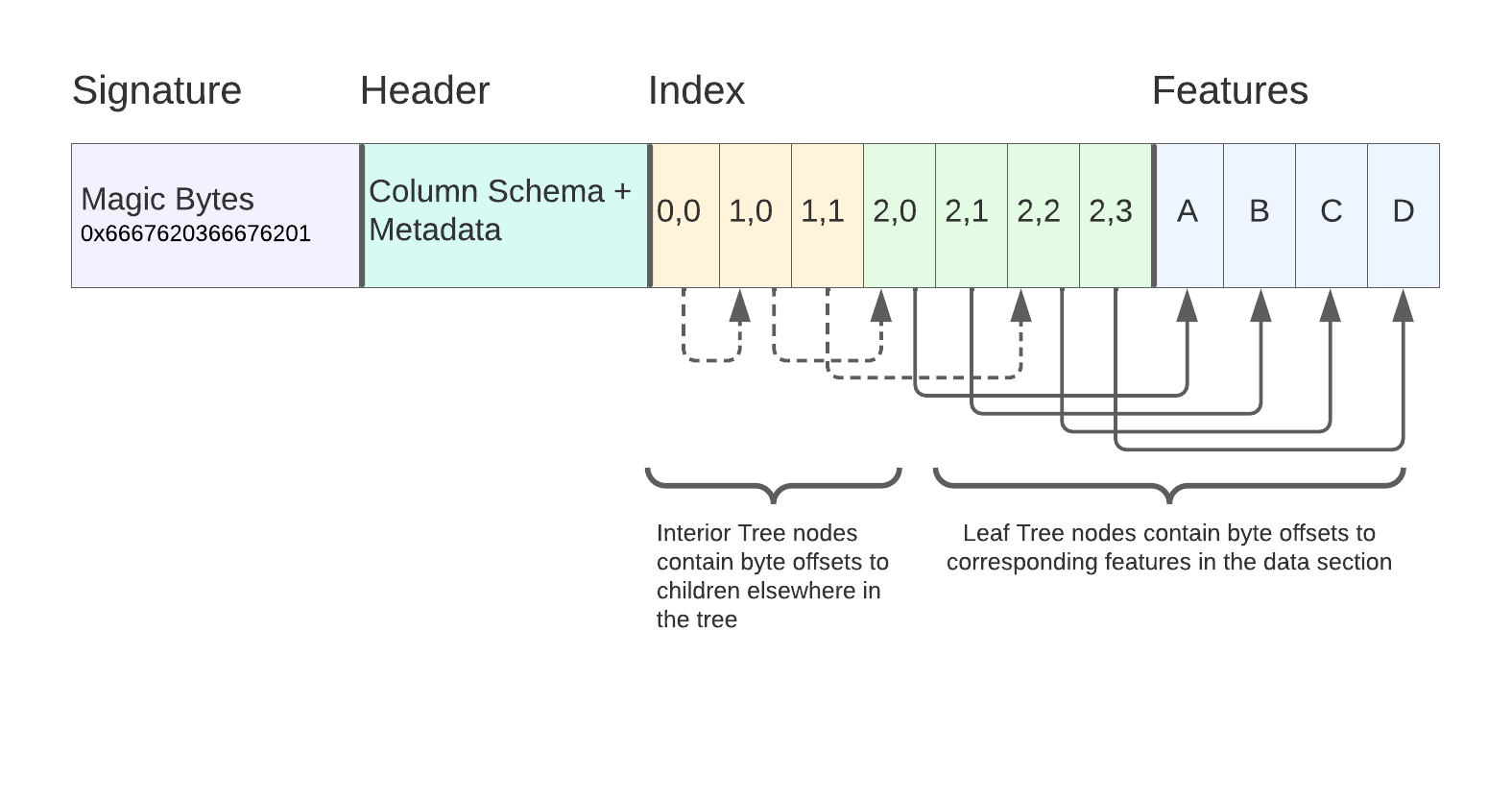
- Vector data stored as rows representing points, lines, or polygons with an attribute table.
- FlatGeobuf is a binary encoding format for geographic data using flatbuffers and stored as a single file.
- A row-based streamable-spatial index optimizes for remote reading.
- Learn more: https://github.com/flatgeobuf/flatgeobuf, Kicking the Tires: Flatgeobuf
image source: https://worace.works/2022/02/23/kicking-the-tires-flatgeobuf/
Geoparquet

- Vector data is traditionally stored as rows representing points, lines, or polygons with an attribute table
- GeoParquet defines how to store vector data in Apache Parquet, which is a columnar storage format (like many cloud data warehouses). “Give me all points with height greater than 10m”.
- Learn more: https://github.com/opengeospatial/geoparquet
image source: https://www.wherobots.ai/post/spatial-data-parquet-and-apache-sedona
Learn More
Today’s presentations:
Why Cloud Native and Analysis-Ready-Cloud-Optimized (ARCO) Data for Scalable Cloud Computing and Data Analytics to Support Open Science (PART I):
- Beyond the Format - Specs and Access Methods
- Brianna Pagán - GeoZarr Specification
- Lucas Sterzinger - Accelerating Data Access with Kerchunk
- Cloud-native data pipelines for generating ARCO
- Sean Harkins - Harmonized Landsat Sentinel(HLS): Migrating an on-premise data pipeline to the cloud
- Raphael Hagen - Pangeo Forge - Cloud Pipelines for generating Zarr stores
Why Cloud Native and Analysis-Ready-Cloud-Optimized (ARCO) Data for Scalable Cloud Computing and Data Analytics to Support Open Science (PART II):
- Cloud-based data services
- Steve Olson - The modernization of the NDFD XML Service using EDR API
- Jonathan Joyce - Architecting a Cloud-native, Service-Based Ecosystem for Scientific Data
- Cloud Data Processing
- Julia Signell - Dask - What it is, How to use it
- How to support adopting these technologies
- Julia Stewart Lowndes and Ian Carroll - How the NASA Openscapes community supports Earthdata users migrating workflows to the Cloud
References
Prior presentations and studies discussing multiple formats
- Cloud Optimized Data Formats Task 51 Study presentation slides
- COG and Zarr for Geospatial Data - draft white paper by Vincent and Ryan
- Guide for Generating and Using Cloud Optimized GeoTIFFs
- What is Analysis Ready Cloud Optimized data and Why Does it Matter? for NOAA EDMW Sept 15, 2022 - previous presentation on this topic
- Brianna-ESIP-2022.pptx - previous presentation on this topic
- An Exploration of ‘Cloud-Native Vector’ | by Chris Holmes
Format Homepages and Explainers
- https://flatgeobuf.org/ - links to some example notebooks and provides the specification
- HDF in the Cloud challenges and solutions for scientific data - Matthew Rocklin’s discussion about HDF in the cloud
- https://copc.io/ - Cloud-Optimized Point Cloud home page + explainer
- Cloud Native Geospatial Lidar with the Cloud Optimized Point Cloud - LIDAR Magazine - Howard Butler explains COPC in lidarmag
- Kicking the Tires: Flatgeobuf - Flatgeobuf Blog by Horace Williams